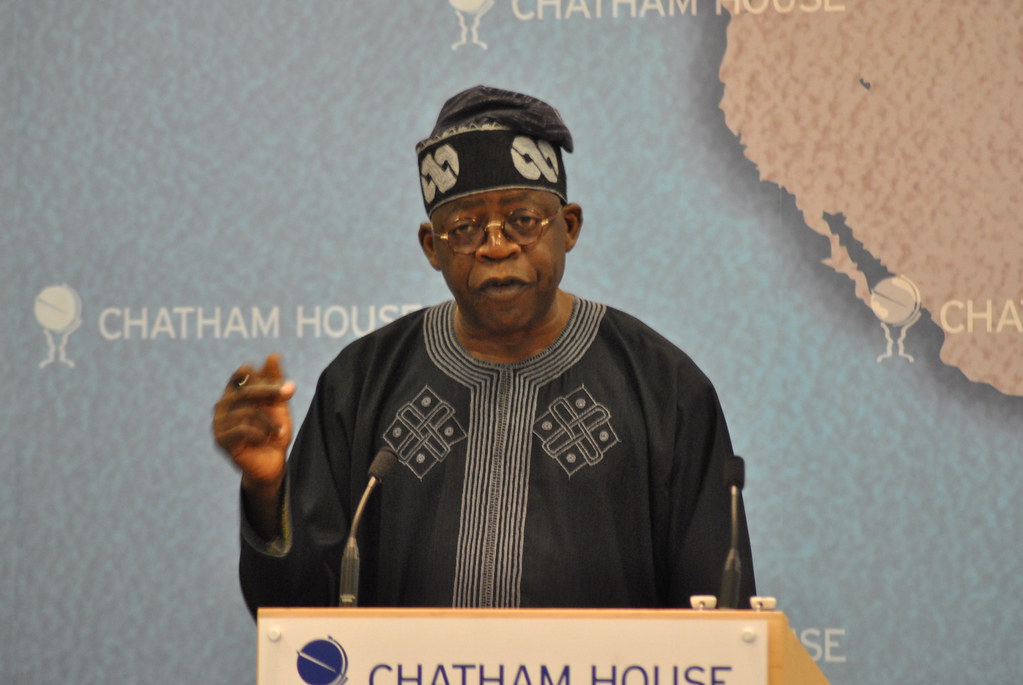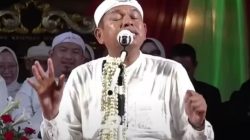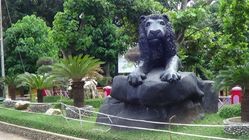Last week, it was announced that the International Conference Centre, Abuja, was renamed Bola Ahmed Tinubu International Conference Centre by the Minister of the Federal Capital Territory, Chief Nyesom Wike. The curious thing was that the ICC was not built by Tinubu but only renovated by him. And while the ICC was built by General Ibrahim Babangida in 1991 with the sum of $24m, it was renovated by Tinubu in 2025 with the sum of $39bn.
Reacting to that name change, investigative journalist Fisayo Soyombo posted as follows:
“In just two years, President Bola Tinubu has named/renamed at least six edifices/institutions after himself:
Bola Ahmed Tinubu Barracks, Abuja;
Bola Ahmed Tinubu Technology Innovation Complex, Abuja;
Bola Tinubu Polytechnic, Abuja;
Bola Ahmed Tinubu Way, Abuja;
The National Assembly Library, now renamed the Senator Bola Ahmed Tinubu Building and yesterday, the erstwhile International Conference Centre, now Bola Tinubu International Conference Centre.
I won’t be shocked if APC gets renamed Bola Tinubu Progressives Congress sometime soon!”
Defending both the amount of money spent on the centre as well as the choice of the person it was named after, Wike dismissed critics as those without good taste. He said inter alia:
“The only thing in that International Conference Centre that was not changed was the block work. Everything in the Bola Ahmed Tinubu International Conference Centre was changed.
“Nigeria, as the Giant of Africa, must not only show that it is the Giant of Africa; people must see what makes you to be the Giant of Africa. Nobody who loves this country would criticise the International Conference Centre.
“They said we did not name the International Conference Centre after someone who built it. Nnamdi Azikwe International Airport was not built by Nnamdi Azikiwe. Moshood Abiola International Stadium was not built by Moshood Abiola.
“What was the exchange rate in 1991? Compare the exchange rate to what we have in 2025. We have taste, we want the best for the country, and the president has given the best for the country.
“If you did not do well to defend your boss when you had the opportunity, it is your business. I am here, and I will defend my boss. I have done it and I have no regret at all.”
On the surface, Wike’s haughty argument may sound unassailable, but in reality, it is disingenuous. Let’s look at the price spent on renovating the building. His insinuation about the wide disparity between the exchange rate in 1991 and 2025 is mischievous because the prices are not in naira but in dollars. Therefore, the issue of the exchange rate should not arise. And even though renovation should be cheaper than construction, nobody expects the price spent in 1991 and that spent in 2025 to be the same or even close. But let’s look at something basic that is easy to measure over the years.
In 1991, the price of a bottle of Coca-Cola in the United States of America was between $0.75 and $1.00, depending on the location and retailer. If we take a middle price, we can say that the price of a bottle of Coke in 1991 in the US was $1. Today, a bottle of Coke costs between $1.50 and $2.50. The median price will be $2. That means that between 1991 and 2025, the price of a bottle of Coke has doubled (100 per cent increase), which is understandable if inflation and other factors are taken into consideration.
Similarly, in 1991, the average retail price per gallon of whole milk in the USA was about $2.50. Today, the retail price of the same size of milk is between $4.00 and $4.50. Even if it is stretched to $5, it means that again, the cost of milk from 1991 to 2025 has almost doubled (100 per cent increase).
Furthermore, if we choose to estimate what the value of $24m of 1991 would be in 2025 using an average annual inflation rate of 2.5 per cent, we will get $55.6m in 2025. Again, this considers inflation by using the compound interest formula to estimate the future value of money. In layman’s language, since inflation is the general rise in prices over time, which reduces the purchasing power of money, it means that what one could buy with $1 in 1991 would cost about $2.3 in 2025. This shows that if the ICC were to be built again today exactly the way it was built in 1991, it would cost $55.6m, which again hovers around a change of about 100 per cent. One can see the consistency in the figures.
Therefore, if the cost of renovation today was double the cost of building the centre in 1991, it would not have been a problem. Even if it quadrupled to a billion dollars, it would still not raise a lot of eyebrows. But skyrocketing to $39bn is mind-boggling.
That such a humongous amount of money was spent on the renovation of a centre at a time when there are no functional hospitals and clinics, electricity generation, schools and universities, and other facilities that will affect the lives of the people and boost the economy of the country is puzzling. There have been many other money-guzzling projects that this administration has embarked on recently for the benefit of the leaders rather than the masses. These include the renovation of residences, the purchase of vehicles, maintenance of the presidential fleet, etc. That these projects are being executed at a time when the leaders are exhorting the masses to tighten their belts and make sacrifices is hypocritical. Ironically, those urging the masses to make sacrifices are taking care of themselves and swimming in opulence and flamboyance while the masses wallow in hardship.
The other point is the issue of Nnamdi Azikiwe International Airport and Moshood Abiola International Stadium, named after people who didn’t build them. The bottom line is that the leaders who did the naming did not name these national monuments after themselves. They honoured other leaders. Their successors would decide whether to honour them. That is what leadership is about. Naming national monuments after oneself is self-serving. And that Tinubu has named many monuments after himself just within two years makes it even more disturbing.
This fixation on naming many monuments after himself is a trait that keeps developing countries developing infinitely at a time their contemporaries have become developed. Putting one’s interest above that of others is not a positive trait in leadership. What it points to is a mindset that shows that the President will put his interests above those of the public or the nation. And for a country like Nigeria that has so many deficiencies, such a leadership mindset will not make the country grow.
Naming many monuments after oneself does not make a leader more popular. A new administration can decide to change the names of such monuments. Great leaders write their names in the hearts of the people through unforgettable acts. Even long after they are gone, they are positively discussed and celebrated by those who never witnessed their leadership. But through the positive reports in books, movies, documentaries, and archived newspapers and magazines, they are remembered with joy and pride. That should be the target of our leaders if they truly believe that they want to make a difference.
-
X: @BrandAzuka
Provided by SyndiGate Media Inc. (
Syndigate.info
).











